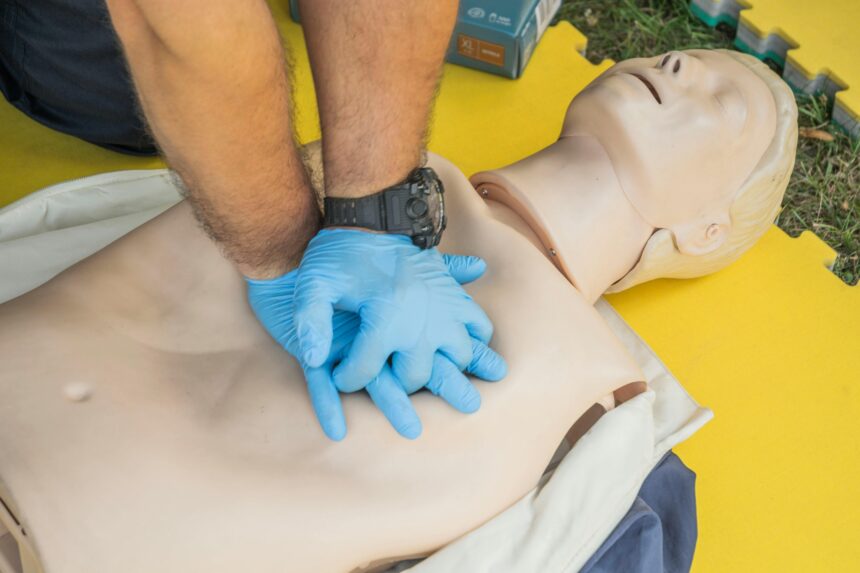Key Highlights:
- India is adopting Artificial Intelligence (AI) to strengthen its emergency response and disaster management capabilities.
- AI applications focus on real-time monitoring, predictive disaster analysis, and resource allocation during crises.
- Indian government programs, supported by public-private collaborations, are driving AI innovations in emergency response.
Revolutionizing Emergency Response with AI in India
India faces frequent natural disasters such as floods, cyclones, earthquakes, and landslides, impacting millions of lives and causing significant economic losses. To address these challenges, the Indian government is increasingly turning to Artificial Intelligence (AI) to enhance its emergency response framework. By leveraging AI-powered tools, authorities can predict disasters, monitor real-time situations, and ensure efficient deployment of resources, ultimately reducing casualties and economic damage.
Government Initiatives Driving AI Adoption
National Disaster Management Authority (NDMA) Initiatives
The NDMA, India’s apex body for disaster management, has integrated AI into its operations to improve disaster preparedness. AI-based predictive models analyze historical data and environmental patterns to forecast disasters like floods and cyclones. For instance, partnerships with organizations such as the Indian Space Research Organisation (ISRO) enable the use of satellite imagery combined with AI algorithms for precise disaster risk mapping and early warnings.
C-DAC’s AI Solutions for Disaster Monitoring
The Centre for Development of Advanced Computing (C-DAC), under the Ministry of Electronics and Information Technology, has developed AI tools for real-time disaster monitoring. Their AI-powered platforms process data from IoT sensors, weather stations, and satellite feeds to provide actionable insights during emergencies. For example, during the 2018 Kerala floods, such technologies played a crucial role in monitoring rising water levels and guiding rescue operations.
Integrated Coastal Zone Management Project (ICZMP)
Under the Ministry of Environment, Forest and Climate Change, the ICZMP employs AI technologies for coastal monitoring and disaster management. AI-driven tools track changes in coastal ecosystems, enabling early detection of threats like storm surges and tsunamis. This initiative aligns with India’s commitment to building resilient coastal communities.
How AI is Enhancing Emergency Response
- Predictive Disaster Analysis:
AI systems analyze historical weather data, soil conditions, and other environmental factors to predict disasters with higher accuracy. For example, the Indian Meteorological Department (IMD) uses AI to enhance cyclone tracking and issue timely alerts. - Real-Time Monitoring:
During disasters, AI-powered drones and satellite imagery provide real-time visuals of affected areas. This data helps authorities assess damage, identify stranded populations, and plan relief operations efficiently. - Resource Allocation:
AI helps optimize resource distribution by analyzing population density, infrastructure availability, and accessibility in disaster-hit regions. This ensures that aid reaches the most vulnerable communities quickly and effectively. - Social Media Analysis:
AI tools analyze social media activity during emergencies to identify distress signals and track the spread of misinformation, enabling authorities to respond promptly and accurately.
Collaborative Efforts for AI-Driven Disaster Management
The Indian government is fostering partnerships with technology companies, research institutions, and international organizations to accelerate AI adoption in emergency response. Collaborations with ISRO, IITs, and private tech firms have led to the development of innovative solutions tailored to India’s unique disaster challenges. Additionally, programs like Digital India are laying the foundation for a robust digital infrastructure to support these AI advancements.
Overcoming Challenges
Despite the progress, challenges remain, such as:
- Data Accessibility: The lack of centralized and standardized data can hinder AI model development.
- Technical Expertise: Bridging the skill gap in AI technology remains a priority for the government.
- Infrastructure Gaps: Ensuring uninterrupted connectivity in remote areas during disasters is critical for effective AI deployment.
To address these, the government is investing in capacity-building programs, creating open data platforms, and expanding digital connectivity under initiatives like BharatNet.
The Road Ahead
India’s adoption of AI in emergency response is a testament to its commitment to safeguarding lives and property in the face of growing disaster risks. By integrating cutting-edge technologies into disaster management frameworks, the Indian government is creating a more resilient and responsive system. With continued investments and collaborations, AI will play an increasingly vital role in protecting India’s diverse and vulnerable communities.


Leave a Reply